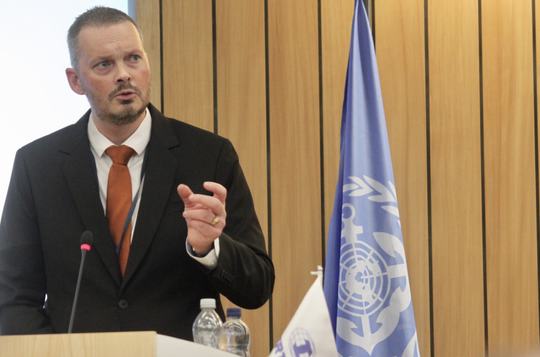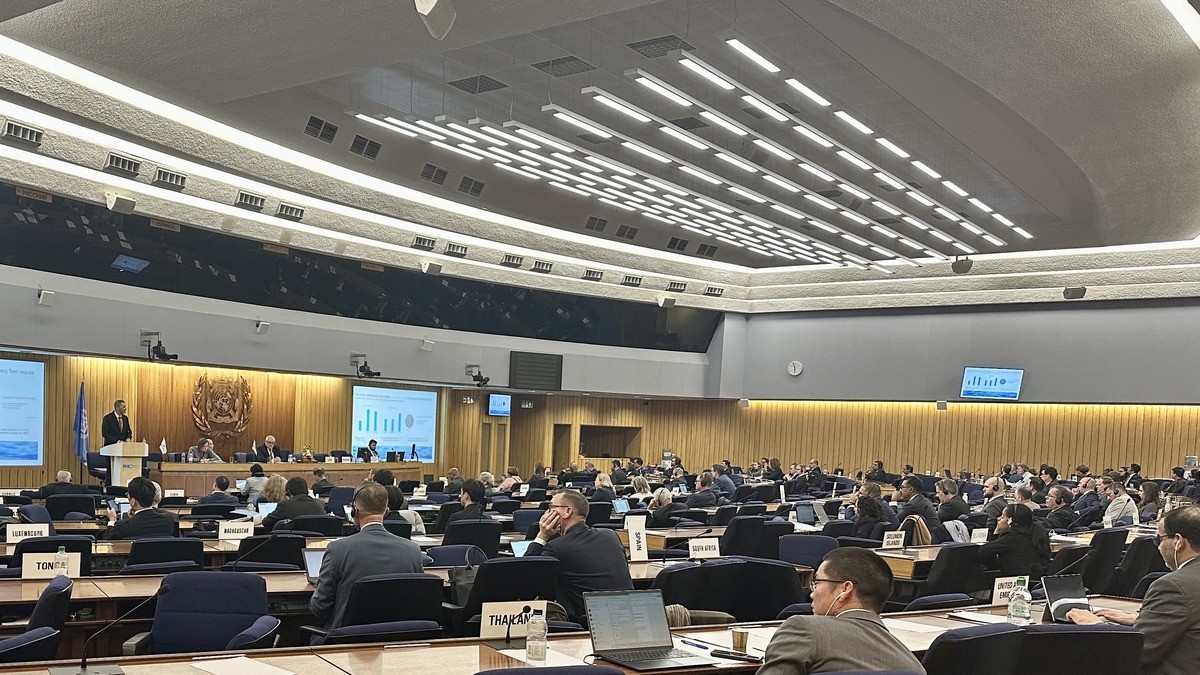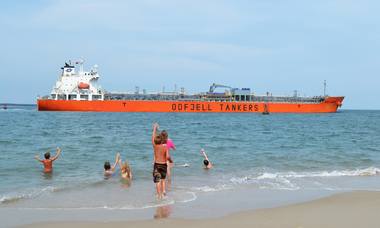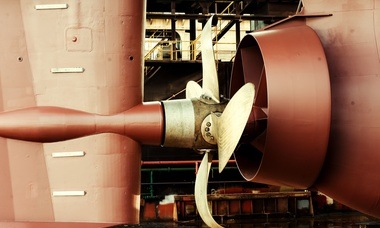The meeting gathered around 400 IMO delegates, EU representatives and invited stakeholders. Our analysis was earlier this year submitted to IMO’s Marine Environmental Protection Committee (MEPC) as input to the ongoing work to revise its greenhouse gas strategy by July 2023. The presentation was a walk-through of this analysis.
"We invite IMO to consider the information and keep a pragmatic and holistic approach in coordinating ambition levels – and a realistic expectation of green fuels penetrating the shipping sector, at scale, in a sustainable pace," Hjortland said. "We recommend IMO to take initiative for cross-sectoral studies, focusing on how to best use renewable electricity when all sectors are chasing zero greenhouse gas emissions, to avoid net increases of greenhouse gases due to sub-optimum use of the renewable electricity."
Two parallel pathways toward zero-emission deep-sea shipping
Hjortland presented the key figures that lay the foundation for Odfjell's strategic choices: Research and available data from a range of internal and external sources reveal that making green fuels for deep-sea shipping will require more than 50% of all renewable electricity in the world.
It will take a long time to materialize sustainably produced green fuels at scale for deep-sea shipping. In the meantime, it will be a battle of resources between the various sectors, which potentially can lead to sub-optimum use of the very building block for decarbonization across all sectors: renewable electricity.
From a holistic perspective, a fundamental challenge is that from 1 kwh electricity used for green fuels production, you end up with 0.2 kwh on the propeller of the ships.
Based on the analysis, Odfjell's strategy is to focus on parallel pathways, Hjortland shared:
Path 1: Contribute to the energy transition, and bend the emissions curve, by further improving energy efficiency until sufficient renewable electricity is available for sustainable production of green fuels for deep-sea shipping at scale.
Through operational and technical measures, including installation of more than 100 energy-saving devices, Odfjell has so far improved our fleet's Annual Efficiency Ratio (AER) by around 50% against the average IMO baseline for our 2008 fleet. Installation of more novel, yet available, technology is in the pipeline, reducing our emissions further.
Path 2: Ensure newbuilds with both zero-emission capability and full flexibility to accommodate for fuel changes during the vessels' lifetime.

"We cannot sit still while waiting for sufficient access to renewable electricity, so we choose a two-pronged strategy. To avoid a net increase in global GHG-emissions, we believe shipping's best holistic contribution in the energy transition phase is not to change to green fuels (yet), but to further improve on energy efficiency until sufficient renewable electricity is available for sustainable production of green fuels.”
Erik Hjortland, VP Technology
“We need to act now to make a positive difference. Every initiative counts. According to a recent study by Clarksons, 75% of the world fleet has not installed any energy-saving devices. The reduction potential through energy efficiency is therefore very high."
Selected key points from Odfjell’s analysis and conclusions:
- Regulators need to ensure full- and rapid scale-up of renewable electricity and onshore carbon capture storage, and electrify everything that can be electrified to minimize energy loss from production to consumer.
- In the ramp-up period, we must stop silo-thinking. Shipping, as for all other sectors, does not have its own atmosphere; what we do at scale can have consequences outside of our own sector. Decarbonizing one sector might transfer the emissions to another sector, and increase the net global emissions until sufficient renewable electricity is available.
- We cannot energy efficiency ourselves to zero-emission, but on the road to zero we can contribute significantly through efficient operation and available technology while renewable energy infrastructure ramps up.
- Not one solution fits all: The decarbonization solutions must and will be adapted to trades and segments. Some vessel segments will experience an earlier transition. This is largely due to customer requirements and customers' willingness to pay for green transportation. Liner services may utilize the fact that they trade between fixed ports, and voyage distance/duration will impact the choice of solution – short-sea will be first.
- We need zero-emission developments, solutions and many pilot projects. The solutions in short-sea today will be the solutions for deep sea tomorrow.



